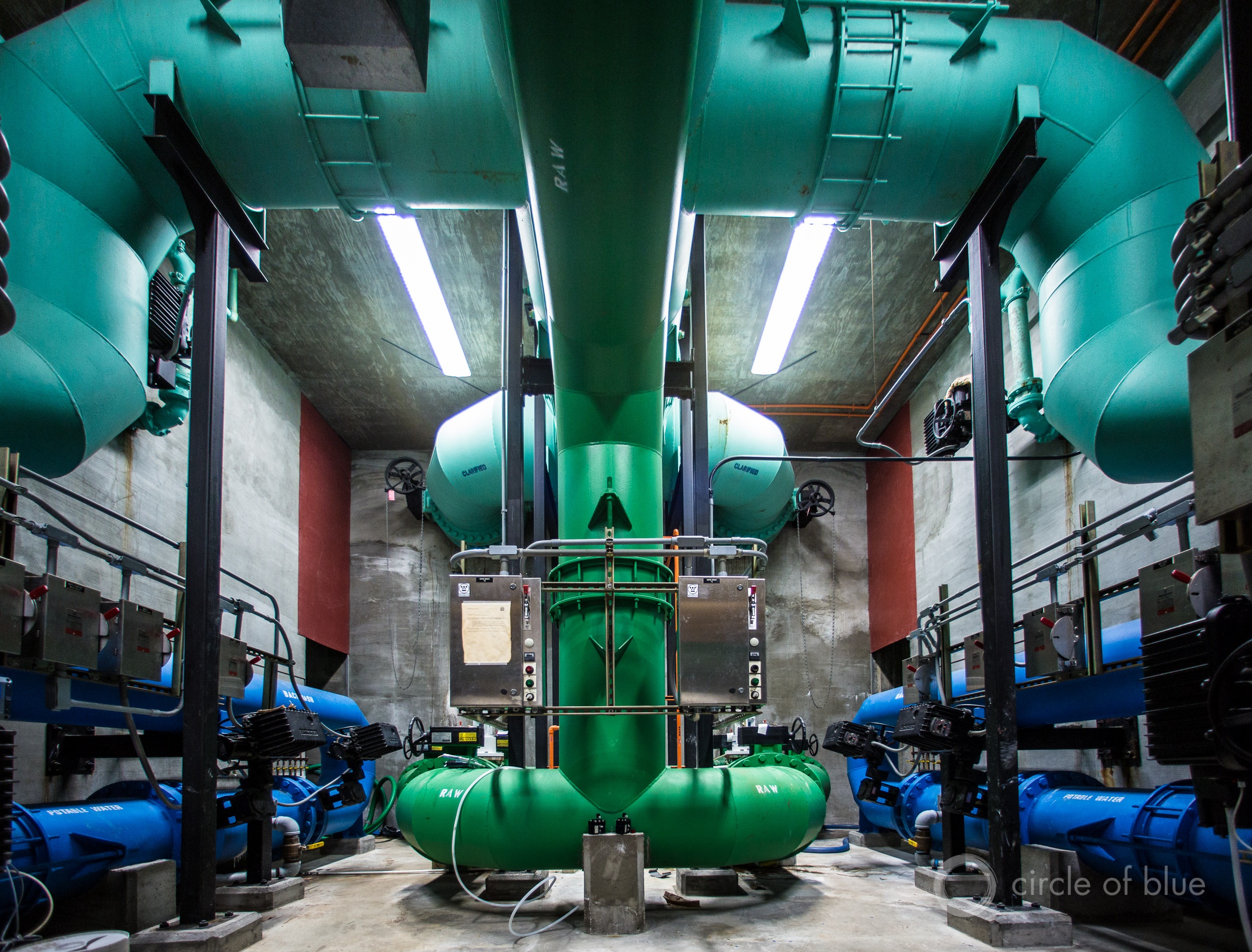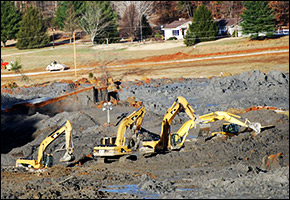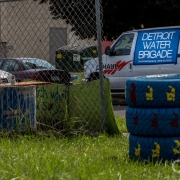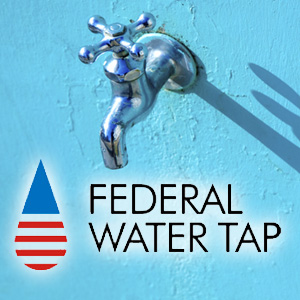Congress Weighs Help To Pay Escalating Household Water Bills
Midwest lawmakers propose new direction for water affordability.

Community members in Flint, Michigan, gather on February 6, 2016, to discuss the lead contamination crisis. A proposal in Congress would help the poorest Americans pay their water and sewer bills. Photo © J. Carl Ganter / Circle of Blue
By Brett Walton, Circle of Blue
Responding to a string of contamination and drinking water emergencies in the Great Lakes region, a group of lawmakers is leading a campaign in Congress to make it easier for poor people to gain access to clean and affordable drinking water.
The Congressional action, led by Rep. Marcia Fudge, a Democrat of Ohio, comes two years after Detroit shut off water to thousands of poor residents behind in their water bills. The city’s action drew criticism from the United Nations, which viewed the shutoffs as a violation of human rights. Last year investigators revealed how, in a cost-cutting move, state officials allowed elevated lead levels in Flint’s drinking water that poisoned the city’s children. Meanwhile, billions of dollars of federally mandated sewer improvements in Akron, Cleveland, and Toledo have sent costs spiraling upward in those cities. Akron, for instance, increased its sewer rates by 69 percent in 2015 to pay for a $US 1.4 billion project.
In early May, Rep. Fudge held a briefing in Congress to educate her colleagues on the need for an affordability program. The act has not yet been heard in committee, the first step in the legislative process, and it has drawn no Republican support.
Rep. Fudge introduced the proposal, the Low-Income Sewer and Water Assistance Program Act, on February 11 to authorize the U.S. Environmental Protection Agency to develop a trial program for helping poor families maintain access to a basic service: clean drinking water. Five other Democrats from Ohio and Michigan joined her in sponsoring the measure to do for water what the United States does for energy, which is to subsidize the utility bills of the country’s poorest residents.
Rep. Fudge’s bill is a first try at changing national policy for helping poor people secure clean drinking water. Its introduction is meant to measure public concern and the Congressional mood to provide financial assistance for a public asset that until very recently the nation took for granted. The proposal contains few details about how the water assistance program would operate and contains no spending authorization.
Lauren Williams, the representative’s press secretary, told Circle of Blue that the money would come from the EPA’s discretionary budget and that the EPA would decide which utilities receive the grants. The utilities will then decide which families in their service area qualify for aid.
“As utility companies work to achieve full compliance with clean water standards, Congress must ensure our nation’s most vulnerable are not priced out of life’s most essential resource,” Rep. Fudge said in a statement. “The Low-Income Sewer and Water Assistance Program Act provides a lifeline for some households struggling with their water and wastewater costs.”
Rising Cost of Water
The proposal reflects a serious need. The six co-sponsors represent urban districts in Michigan and Ohio that face economic challenges related to water. Cleveland and northeast Ohio face a $US 3 billion tab to patch a sewer system that overflows during heavy storms. Detroit must maintain a water system designed for a city more than twice its current population. Flint is still reeling from a lead contamination scandal and has some of the highest water rates in the country.
The act’s sponsors want to maintain environmental and public health protections mandated by the federal Clean Water Act and Safe Drinking Water Act while keeping water affordable. Instead of grants and low-interest loans to reduce the overall cost of water infrastructure, they seek to develop a grant program that will provide financial aid directly to the families who are least able to pay their monthly water bill.

The cost of repairing old water and sewer infrastructure is causing financial distress among the poorest U.S. households. Photo © J. Carl Ganter / Circle of Blue
The focus on a family’s ability to pay is a recent development, according to Jeff Hughes, director of the Environmental Finance Center at the University of North Carolina and a national expert on water rates.
“It used to be that water and wastewater services were so cheap, we didn’t really think about subsidizing at the household level,” Hughes said during Circle of Blue’s May 11 roundtable on America’s water infrastructure.
The current subsidy model is directed at system costs: the federal government puts money into funds that provide low-interest loans for repairing or expanding water and sewer infrastructure. But as those system costs continue to grow and incomes stagnate, the price of water is sprinting ahead of the poorest residents. Water rates are rising twice the rate of inflation, having increased 48 percent since 2010 in 30 large U.S. cities, according to Circle of Blue’s annual survey.
“Now, household bills in many areas have gotten high enough that for certain customers we’re starting to see the strain, we’re starting to see increased disconnections, we’re starting to see rebellions — ratepayer rebellions — in urban, low income neighborhoods,” Hughes said.
Energy Program as a Model
The federal government has given poor families a hand with energy bills since 1981, when the Iranian revolution and the outbreak of the Iran-Iraq war sparked a sharp rise in oil and natural gas prices. The Low Income Home Energy Assistance Program has since been a mainstay of federal aid to the poor. The program spent $US 3.4 billion in fiscal year 2016 to help roughly 6.8 million households pay home heating and air conditioning bills and install efficient windows and doors. That is a lot of cash compared to federal water infrastructure funding. The money that Congress allocated to energy bill assistance this year is about 50 percent higher than the money it directed to the clean water and drinking water state revolving funds, the main federal program for investing in local water infrastructure.
With the cost of water infrastructure climbing and water shutoffs in cities like Detroit prompting neighborhood bucket brigades, social justice advocates are pushing utilities to give more thought to bill assistance. The pressure is changing how utilities operate, Hughes said.
“You’re starting to see things that you wouldn’t have dreamed of seeing 10 or 15 years ago, where utility finance offices are spending as much time studying their customers’ financial capacity as they are traditional financial tasks,” Hughes noted.
There is no single playbook, either. A federal program would level a playing field that is incredibly uneven, with each state having its own rules on how utilities set water rates or spend money to aid the poor.
“There are 50 financial legal frameworks in this country that influence local government rate setting,” Hughes said. In California, for example, it is illegal to use charges on high-volume water users — typically wealthier residents with large lawns — to subsidize water bills for poorer people. Many other states, including his home state of North Carolina, have similar provisions, Hughes said.
A bill assistance program is an old idea that is only now, after numerous water emergencies, is drawing attention. The National Drinking Water advisory group recommended in 2003 that the federal government adopt a water bill program modeled on the energy bill program, but Congress still has not approved one.
Brett writes about agriculture, energy, infrastructure, and the politics and economics of water in the United States. He also writes the Federal Water Tap, Circle of Blue’s weekly digest of U.S. government water news. He is the winner of two Society of Environmental Journalists reporting awards, one of the top honors in American environmental journalism: first place for explanatory reporting for a series on septic system pollution in the United States(2016) and third place for beat reporting in a small market (2014). He received the Sierra Club’s Distinguished Service Award in 2018. Brett lives in Seattle, where he hikes the mountains and bakes pies. Contact Brett Walton










